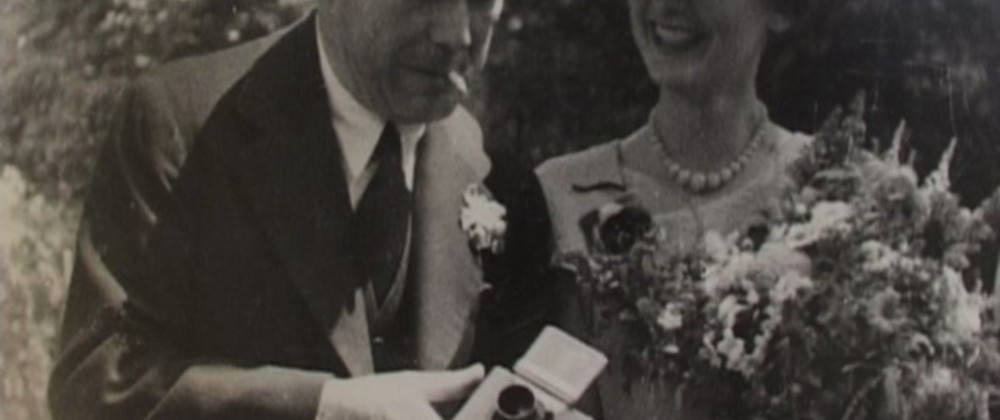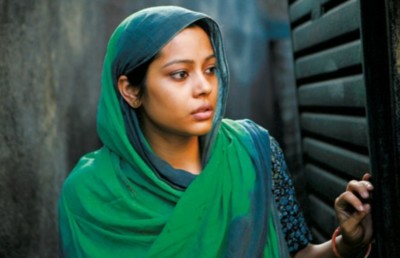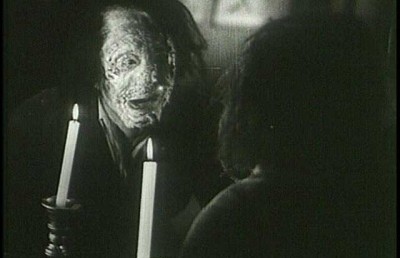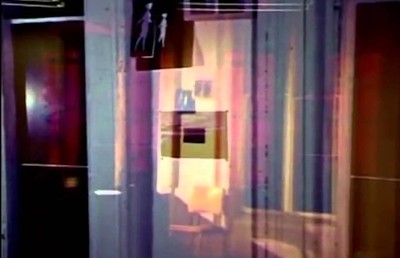An Interview with Dzintra Geka
On the film John Dored’s Island

The documentary John Dored’s Island played in Montreal at the Eastern European Film Festival held in September 19-25/2008. That day I had a chance to meet its director Dzintra Geka, a filmmaker from Latvia, to ask a few questions about her work in filmmaking. Geka seemed relieved to get an interview offer in Russian rather than English. She then remembered the time she was accepted to a Film School in St Petersburg (Russia), where she had moved from Latvia to study. Geka recalled her entry exam, where one of the examiners commented, “Well, she is a very interesting person, but it is too bad that we do not understand what she is saying…” It was at that time that she started learning art and film along with the Russian language and culture. Now, Dzintra Geka speaks fluent Russian, using rich visual imagery, just like in her films, to express her ideas.
Living and working in Latvia, Dzintra Geka has directed and produced a number of documentary films since 1990, including her most recent films Signe un…, And igarka, and Hope and Butterfly. John Dored’s Island is a film of exceptional quality that succeeds in transmiting the atmosphere of the time period and, most importantly, the story of people’s lives. John Dored was a Latvian cinematographer who traveled throughout Europe in the beginning of 20th century, producing and collecting film footage of various historical events. He gained his training with Charles Pathé in France but then continued to work as a reporter for Paramount Pictures for more than 25 years after his immigration to United States. The film is based on the correspondence between John and his wife Elisabeth. Often being in the center of important historical events, the figure of John Dored is revealed in the film from the perspective of his relationship with his wife. This man’s story is recounted through the words he wrote, the images he produced and the director’s attempt to reproduce the romantic image of his life and his personality.
Geka’s filmic images transmit a unique atmospheric quality that invites us to reflect on what we have just seen on the screen. This treatment of the documentary medium places her works in the realm of what I would call a “poetic” documentary style. For example, the image of the painter at work in his country house, with leaves blowing in the wind, fades away with a soft focus shift to reveal the window glass and the interiors of the house. The old man in the chair watching the old footage with his face full of expression, transforms within a continuous long take into the surface of the mirror. The nostalgic feeling is then further evoked with old black and white footage, showing its age in emulsion damage and scratches, and a slowly moving layer of fog-like substance. All of this creates a connection with the stunningly beautiful images of clouds hanging motionless in the sky, with changes affected by the gradations of light. Such imagery combined with music and voice-over narration of John and Elizabeth’s letters allows the mind to seep into the atmosphere of the film world. The combination of the footage made in different time frames subtly connects with sound and image texture transitions to solidify the connection between time and place, allowing us to reflect on how this man lived his life.
Offscreen: John Dored’s Island is a documentary film that projects the essence of this man’s character viewed through the romantic prism of memory. John Dored was a Latvian film journalist who had a remarkable life and career, a big part of which he spent traveling. What choices did you have to make in developing a documentary film on a historical figure who lived in the first half of the 20th century?
Dzintra Geka: It was rather difficult, I should say, to develop a story for a documentary film based on the life of John Dored. This man was such a character! His persona can be viewed in terms of social, historical, and political context as well as his contribution to journalism, documentary filmmaking and cinematography in general. In fact, making a film about John resurrects a name that was forgotten in the Soviet Latvia because of political and ideological reasons. Just the following facts from his biography make his life worthy of being seen on screen: that he was commissioned by Paramount to film Lenin’s funeral in Russia; and was captured and escaped from the KGB.
Offscreen: How did you come across John Dored’s name?
DG: When I met his son in 1993.
Offscreen: Is there a personal approach that helped you explore the subject of your film in such depth?
DG: John’s personality suddenly transforms into the image of a romantic hero when transferred to the screen, and it is so rare in our days. I believe that characteristics of any man’s personality may travel through time. Somehow they may be transferred genetically. What I saw in his son I believe allowed even a deeper understanding of John’s character. That is why I found it very important to include him in my film. Also, his presence in the film creates a time bridge between past and present.
Offscreen: Apart from publicly resurrecting his name, what were your objectives in exposing this man’s life on film and what brought you to making John’s and his wife Elisabeth’s feelings a keynote in your film?
DG: Working along with my screenwriter, we had to eliminate a lot of interesting facts about this man’s life and develop a story where the essential element is the love story of John and his wife Elisabeth. Otherwise it would have been a report on what this person did, but my idea was really to discover who this person was.
Offscreen: Often on the move, John wrote letters to his beloved wife. The beauty of their relationship and appreciation of one another lasted all their lives and is embodied in those letters to be carried on through time.
DG: Indeed, I was drawn to the romantic aspect of this man’s life. I find it is the man’s relationship with his wife and with the world around him that enabled us to truly get the insight of his personality.
Offscreen: Why did you make the letters, which you’ve given a voice to in the film, such an essential element?
DG: Those letters were the thread that kept John and Elisabeth close to each other during many months of being apart. Most of them were kept in John’s son’s personal archives and I was stunned by his reaction, when he asked how we could use these letters to enrich the film’s story. He could not believe that I would assume he had read them. It was the respect of privacy, which he had never crossed, even though he had been keeping those letters for so many years in his home. In fact, he only opened them when we were working on the film. I believe that with time these letters will become a document of cultural value to be disclosed to the public at large. As a matter of fact, John’s excerpts from the letters used in the film come from his son’s archives, and those from Elisabeth’s come from the book she wrote on John’s life.
Offscreen: Your film is composed of John’s footage and photographs from the time period as well as the footage done for the film. Was there any difficulty in using the old footage, such as excerpts from the First World War and Lenin’s funeral footage by John Dored, as well as personal footage of John and his wife at their house and on a boat trip?
DG: Surprisingly, the most difficulty part was in identifying the footage that may have been done by John Dored and stored in the archives. It was such a mess!
Offscreen: The visual language in your film opens up a dialogue with the spectator. Do you consider it an associational or allegorical suggestion for the audience?
DG: I find that the image of clouds captures the allegory of the flow of time, which is impossible to grasp.
Offscreen: There is also the image of an island recurring in the film presented with the footage of different time periods.
DG: The island represents his wife Elisabeth, his home, and a point of return, things which form the core of his life. It is the central image to represent the character’s longing to return to his love. I believe a person of such profession that also has a strong passion for his work does not belong to himself. Always on the run to far away trips filming, often facing danger and yet so committed to his work. It feels like it is not only the disease that caused his death, but also the fact that he had to stop filming.
Offscreen: What inspired your musical choice to create such melodic relations to the film’s imagery?
DG: The music choice was purely intuitive. I felt that the piece creates the sensorial atmosphere of tenderness of the feelings the two characters expressed in their letters. Some say there is too much music in the film, but I think it is vital to creating the film’s rhythm. Even when the music stops on the screen we still edited the images to its rhythm.
Offscreen: How did you feel after the premiere of the film that was held in April 2008 in Latvia?
DG: When we finished editing I felt the film had taken all of my energy! I usually put out too much of myself when I make my films, they become so personal, that it does take a lot out of me. Each time I finish one I make a promise to never do it again!”
Offscreen: Well, I hope that some of your later works or your next one will appear in future Montreal film festivals.













